
views
Collecting Goose Eggs
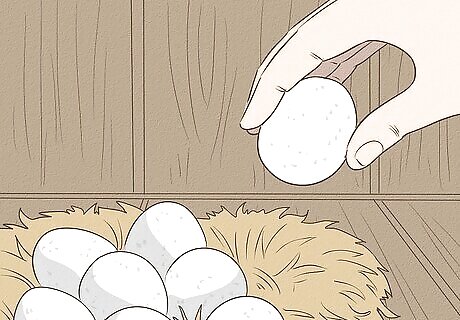
Gather the eggs in the spring. In the Northern Hemisphere, most geese breeds begin laying their eggs in March or April. Chinese breeds begin in winter, though, around January or February. Note that these months will change if you life in the Southern Hemisphere. Most breeds lay eggs in August or September, with Chinese breeds laying eggs in June and July.
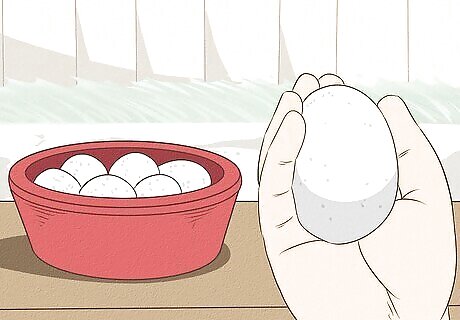
Collect the eggs in the morning. Geese generally lay their eggs in the morning, so you should collect them late in the morning. You should also collect eggs at least four times throughout the day to catch any that arrive at unusual times. Do not give your geese access to swimming facilities until later in the morning, after you have collected the first batch of eggs. Otherwise, the eggs could break.
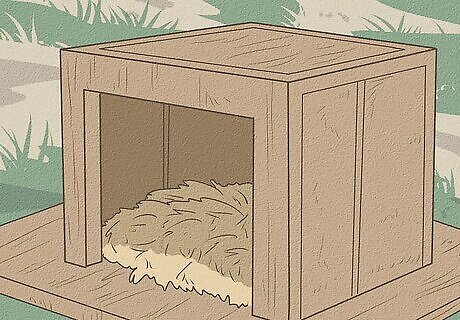
Provide nest boxes. Line each box with soft nesting material, like shavings or straw. The use of nest boxes can prevent more egg breaks. Provide one 20 inch (50 cm) nest box for every three geese in your flock. If you want to speed up the production of your eggs, you can also shine artificial light on the nest boxes throughout the day and evening.

Know which geese to collect from. As a general rule, fertility is 15 percent higher and hatchability is 20 percent higher when eggs are collected from a mature female geese, rather than a geese who is only a year old and in her first season of laying. Of course, your odds will also improve when you select eggs from healthy, well-fed geese. Geese that are allowed to swim generally tend to be cleaner, which keeps the eggs cleaner, as well.

Clean the eggs. Dirty eggs should be lightly cleaned with a brush, a piece of sandpaper, or a piece of steel wool. Avoid using water to clean the eggs. If you must use moisture, wipe the eggs down lightly with a clean, damp cloth. The temperature of the water should be about 104 degrees Fahrenheit (40 degrees Celsius), since it must remain warmer than the temperature of the egg. Warm water causes the egg to "sweat" dirt out of its pores. Never soak the egg in water since bacteria is likely to grow if you do. Dry the eggs thoroughly before storing them.
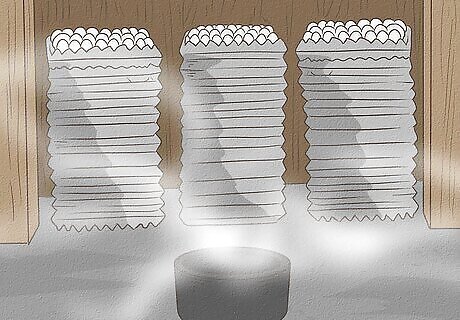
Fumigate the eggs. Fumigation disinfects the eggs. You can technically skip this step, but following it will reduce the likelihood of bacteria finding its way into the egg through the shell. Place the eggs in a small room or chamber that can be tightly sealed off. Release formaldehyde gas directly into the chamber. You can usually purchase it in a 40 percent water solution known as "formalin," or in powder form, called "paraformaldehyde." Closely follow the manufacturer's instructions concerning the manner in which you must release the formaldehyde gas. Since formaldehyde gas is toxic, do not breath it in. If you cannot use a chemical fumigant, place the eggs in single layers and lay them out in direct sunlight for the morning and afternoon. The solar radiation should act as a disinfectant.
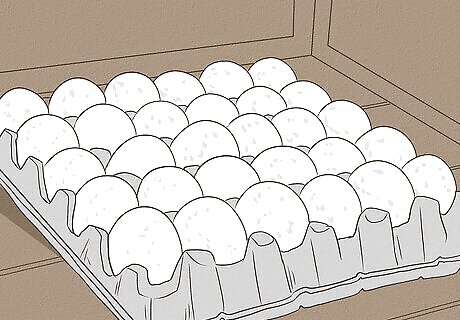
Store the eggs briefly. Place them in a styrofoam carton and store the eggs for seven days in a cooled area. The temperature should be kept between 55 and 60 degrees Fahrenheit (13 and 16 degrees Celsius), with 70 to 75 percent humidity. Never store the eggs in temperatures above 75 degrees Fahrenheit (24 degrees Celsius) or in humidity below 40 percent. Slant or turn the eggs as you store them. The small end should be pointed down. After 14 days of storage, hatchability dramatically declines.
Natural Incubation
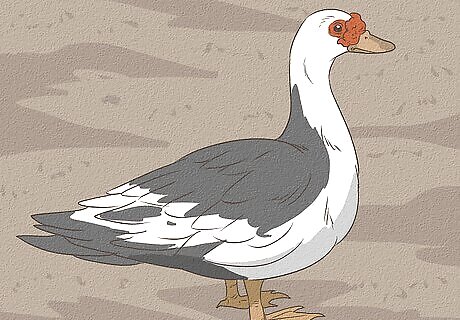
Use Muscovy ducks, when possible. You can use geese to hatch their own eggs, but doing so can be expensive and difficult since geese do not lay while sitting on their eggs. Muscovy ducks provide the ideal conditions. Turkeys and chicken hens can work well, too. Natural incubation is believed to produce the best results overall, but if you cannot use natural incubation, artificial means will also work. Make sure that the hens you use are already broody. In other words, they need to have laid enough eggs of their own for their natural instincts to kick in and demand a period of brooding.
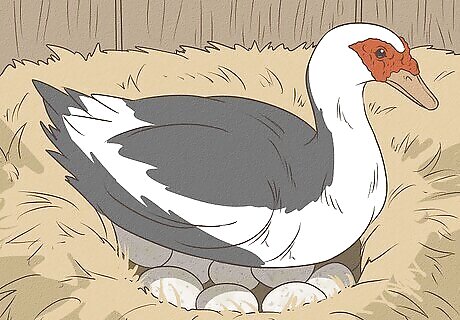
Lay the eggs under the bird. For a Muscovy duck, place six to eight eggs underneath her. For a chicken hen, you can only fit about four to six eggs. If you do use a goose to hatch her own eggs, you can place 10 to 15 eggs under her.

Turn the eggs by hand. If using ducks or chicken hens, the eggs will be too large for the birds to turn naturally. You'll need to turn the eggs by hand on a daily basis. Wait until the bird leaves the nest to eat and drink. After 15 days, sprinkle the eggs with lukewarm water when you turn them.

Candle the eggs. After the tenth day, pass the eggs under a bright light to look inside. Infertile eggs should be discarded and fertile eggs should be returned to the nest.
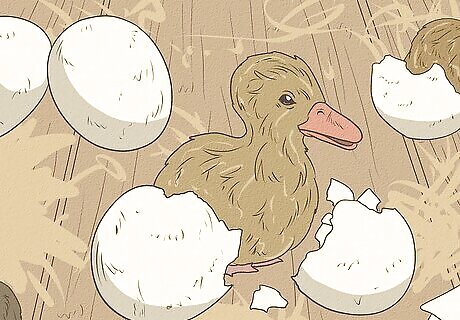
Wait until the eggs hatch. Incubation can take 28 to 35 days, and hatching can take as long as three days. Keep the conditions of the nest clean throughout this entire period and continue turning the eggs each day during the entire process.
Artificial Incubation

Choose your incubator. Typically speaking, you can choose between forced-air incubators and still-air incubators. Incubators that can be set for slow air movement maintain a more even distribution of air, temperature, and humidity throughout the incubator, so you'll be able to hatch more eggs with this type of machine. As a general rule, though, still-air incubators are the most difficult machine to manage air flow in, so a rapid forced-air incubator is still a better option.
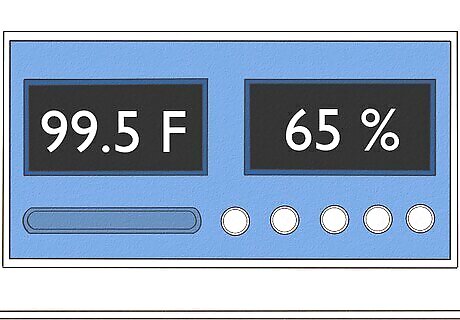
Set the temperature and humidity. The exact conditions will vary based on the type of incubator you use. Set the temperature of a forced-air incubator between 99 and 99.5 degrees Fahrenheit (37.2 and 37.5 degrees Celsius) with a relative humidity of 60 to 65 percent. A wet bulb thermometer should read from 83 to 88 degrees Fahrenheit (28.3 to 31.1 degrees Celsius). For a still-air incubator, set the temperature between 100 and 101 degrees Fahrenheit (37.8 and 38.3 degrees Celsius) at egg height, noting that there can be a full 5 degrees Fahrenheit (3 degrees Celsius) difference between the top and bottom of the incubator. The humidity should be between 60 and 65 percent, for a wet bulb reading of 80 to 90 degrees Fahrenheit (32.2 degrees Celsius) during incubation.

Space the eggs apart evenly. Lay the eggs in your incubator, spacing them apart evenly and in single layers. For best results, lay the eggs horizontally. Doing so can increase hatchability. Try to keep the machine at least 60 percent full. If the incubator is emptier than this, adjust the temperature so that it is warmer by 0.36 degrees Fahrenheit (0.2 degrees Celsius).

Turn the eggs four times each day. You should turn the egg by 180 degrees each time. Turning the eggs by 90 degrees could decrease the number of viable eggs.
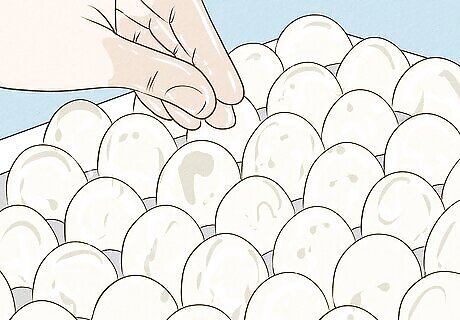
Sprinkle the eggs with warm water. Once a day, you should sprinkle the eggs with a little warm water. Goose eggs require a high humidity, and this water can help maintain that ideal humidity. After 15 days pass, you should submerge the eggs every other day for one minute. Make sure that the water is 99.5 degrees Fahrenheit (37.5 degrees Celsius).

Transfer eggs to a hatcher after 27 days. You'll need to transfer the eggs from the main body of the incubator to a separate hatcher compartment when they are just about ready to hatch. Most eggs hatch between 28 and 35 days. If past experience indicates that your geese eggs hatch at less than 30 days of age, you should transfer the eggs to the hatcher earlier. Try to give the eggs at least three days to hatch.

Maintain the proper temperature and humidity settings. The temperature in the hatcher should remain at 98.6 degrees Fahrenheit (37 degrees Celsius) with a relative humidity of 80 percent. Once the visible hatching process starts, reduce the temperature to 97.7 degrees Fahrenheit (36.5 degrees Celsius) and the humidity to 70 percent. Before placing the eggs in the hatcher, you should dip or sprinkle them with warm water. The water should be about 99.5 degrees Fahrenheit (37.5 degrees Celsius).
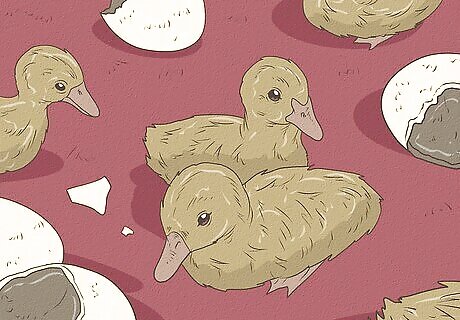
Let the eggs hatch completely. The eggs usually take up to three days before hatching. Allow the goslings to remain in the hatcher for two to four hours before moving them to brooders.

















Comments
0 comment